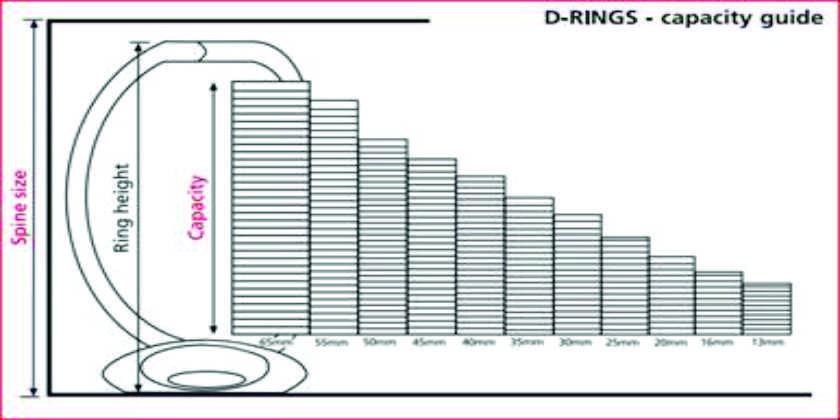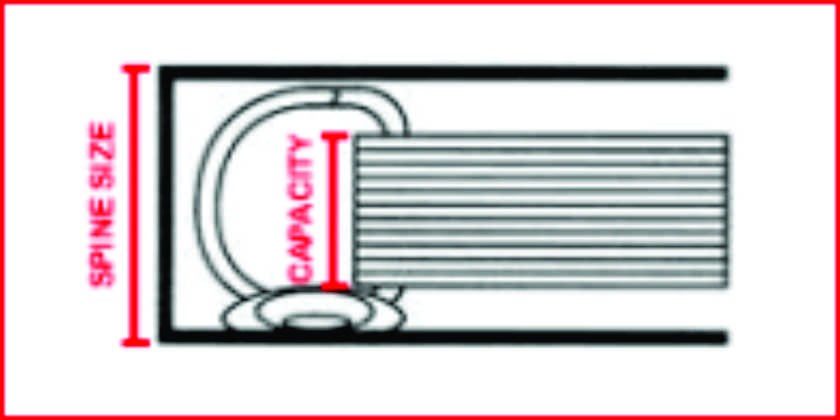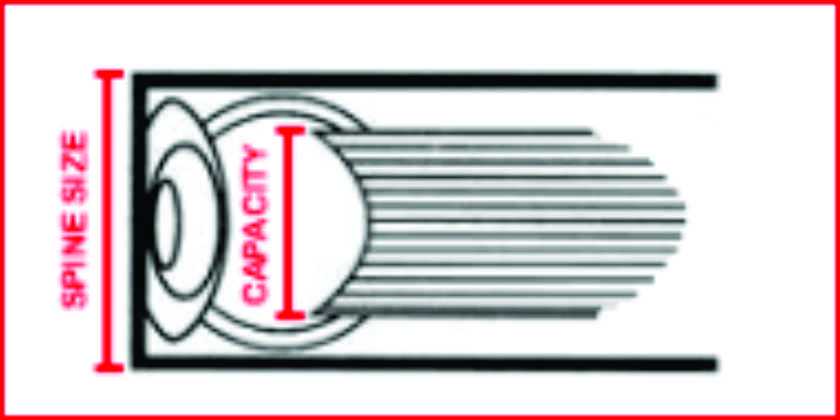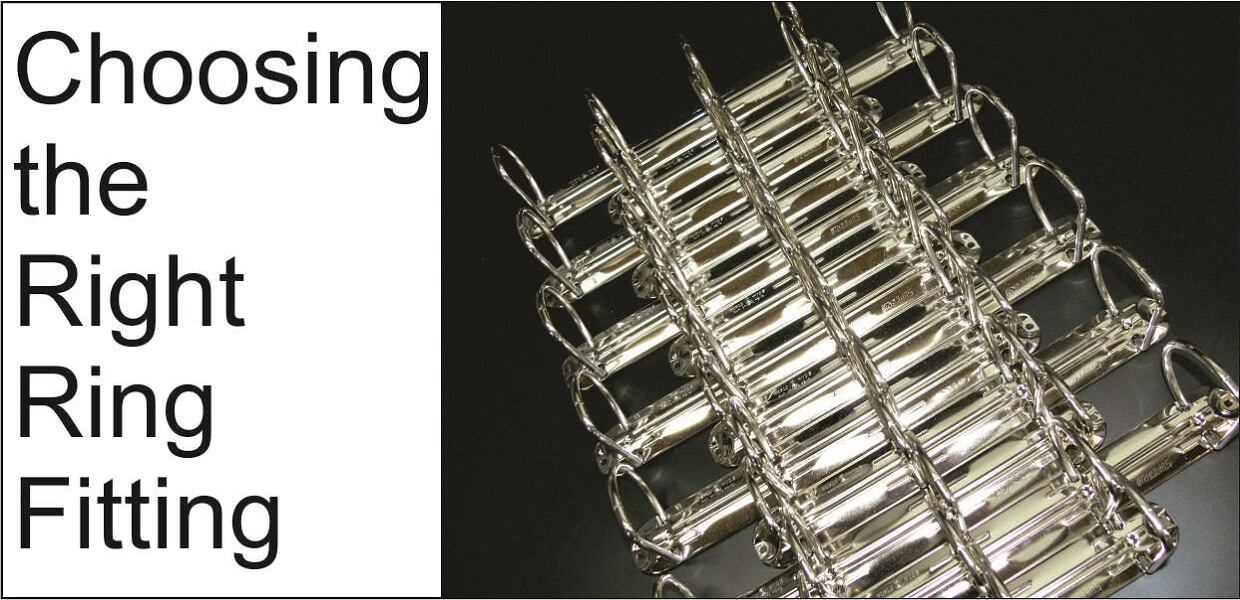Choosing the Right Ring Fitting
07 May 2019
Making the most of your binder selections is more often than not, about getting the right ring fitting – but it’s as easy as 1, 2, 3.
1. CAPACITY NOT SPINE SIZE
Choosing the correct binder for your project will first be determined by what you’re putting in the binder. How many sheets of paper will be stored, and what thickness of paper will be used?
When we know this – we can determine the CAPACITY of the binder required. The capacity is the amount of paper that can be stored on the ring mechanism. A simple rule is to allow 5 mm capacity for every 50 sheets of 80 gsm paper. So if your document was 200 pages – use a ring with a minimum 20 mm capacity.
Standard capacities are: 25 mm , 40 mm , 50 mm, Lever Arch, and are generally more cost effective than the available capacities in between.
The SPINE size is the width of the spine, and relates to how much room the binder will take up on the shelf. The outside spine cover will always be larger as it has to cover the height of the ring mechanism.

2. NUMBER
Most standard ring capacities come in either two (2), three (3), or four (4) ring configurations. So which one is best?
Two (2) rings are the most economical, and most home & commercial offices have a 2 hole punch. This style is ideal where the binder will be used infrequently, or few/infrequent additions will be required. Being only 2 holes, papers are more likely to tear out. Rings are positioned 80mm apart.
Three (3) rings keep the paper contents relatively in line, and are ideal for medium to heavy use applications such as presentations and training materials. Rings are spaced 108mm apart.
Four (4) rings offer the least risk of pages tearing out with heavy use as the pressure is shared across 4 ‘weak’ areas rather than 2 or 3. Pages are held in line, and the 4 ring option is ideal for heavy use items such as reference materials and handbooks. Rings are 80 mm apart.
3. SHAPE
There are two standard ring shapes – D and Round – so named due to their shape. The round ring is quite obviously round; the D ring has a flat edge to one side making the mechanism look like a backward facing “D”.
The D ring is easily the most popular of the two. Fitted to the back cover of a binder, the rivets which hold the mechanism in place are less noticeable, and allow clear space on the spine for decoration. The edges of paper contents held on the D fitting also present flush / in line, giving a professional finish.


The Round Ring mechanism is usually fixed to the spine of the binder. Whilst this does allow the pages to turn almost like a book, it does mean the rivet mechanisms are visible on the outside of the spine and may encroach on branding or decoration design or pocket placement.
Paperwork held on a round ring will have a rounded profile to match the ring holding it, which depending on the application can look a little sloppy. The round ring is however, perfect for use with Easel / Tripod / Lecturn binders.
- Images by Duroweld UK.


